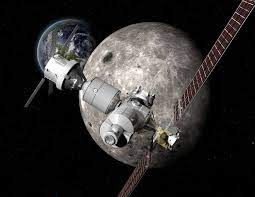NASA’s Curiosity Rover : Discovered Carbon-Bearing Minerals On Mars

NASA’s Curiosity Rover has discovered carbon-bearing minerals on Mars, marking the first solid evidence of a carbon cycle on the Red Planet.
- The discovery was made during the rover’s exploration of an 89-meter stretch of terrain in an ancient lakebed in the Gale Crater, where it drilled into different types of rocks.
- The Curiosity rover identified a carbonate mineral called siderite, which contains carbon and oxygen, in the sulfate-rich layers of Martian rocks. This is the first time this mineral has been found on Mars.
- The rocks containing 5–10% siderite by weight suggest that a significant portion of Mars’ past CO₂ may be trapped in the planet’s crust, rather than having escaped into space.
- The rocks also showed the presence of iron oxyhydroxides, indicating that siderite may have dissolved in acidic water, releasing some CO₂ back into the atmosphere. This points to a limited and slow carbon cycle.
- NASA’s Curiosity Rover is a S. robotic rover launched on November 26, 2011, aboard an Atlas V rocket and landed on Mars on August 5, 2012.
- It is part of NASA’s Mars Science Laboratory (MSL) mission and was the first to use a sky crane landing system to reach the Martian surface.
- The rover runs on a thermoelectric power generator, which utilizes the radioactive decay of plutonium instead of solar panels.
- Its four primary scientific goals are:
- Determine whether life ever existed on Mars.
- Characterize Mars’ past and present climate.
- Understand the geology of Mars.
- Prepare for future human exploration.
- The rover is approximately 3 meters long, weighs around 900 kilograms, and is equipped with an onboard chemistry lab for analyzing rock samples.




